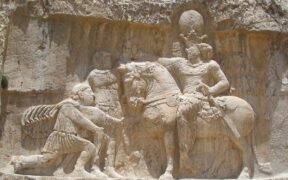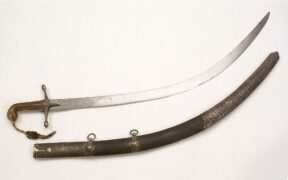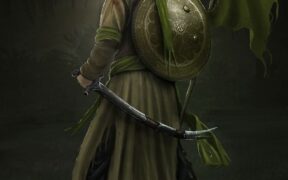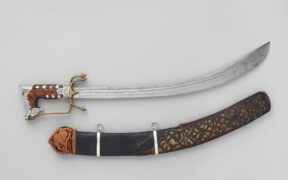Shamshir Sword: The Persian Curved Scimitar
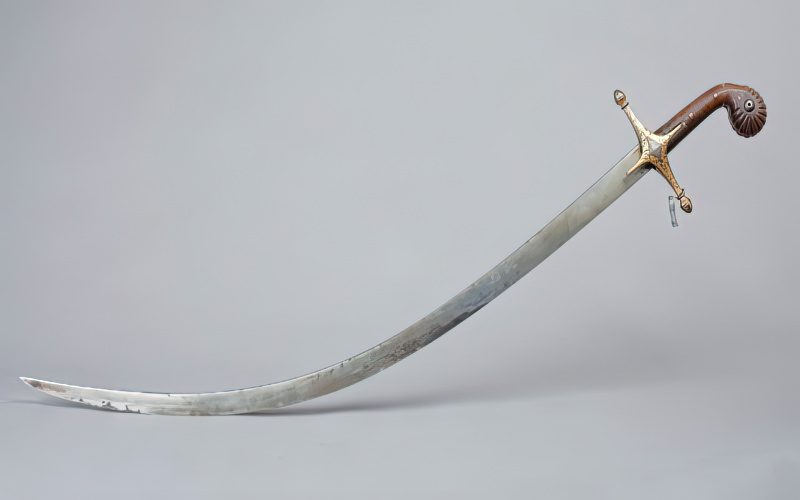
The Persian or Iranian sword that has a distinctly strong, curved blade is called the Shamshir sword. The Shamshir is one of the most unique scimitars and has a very long history of use in mounted warfare.
In this article, we will be exploring the Persian Shamshir sword. We will start by going over its most distinctive characteristics and explain how it can best be put to use. Finally, we review its history and compare it to other scimitars and its closest family member – the Kilij.
Characteristics of the Shamshir Sword
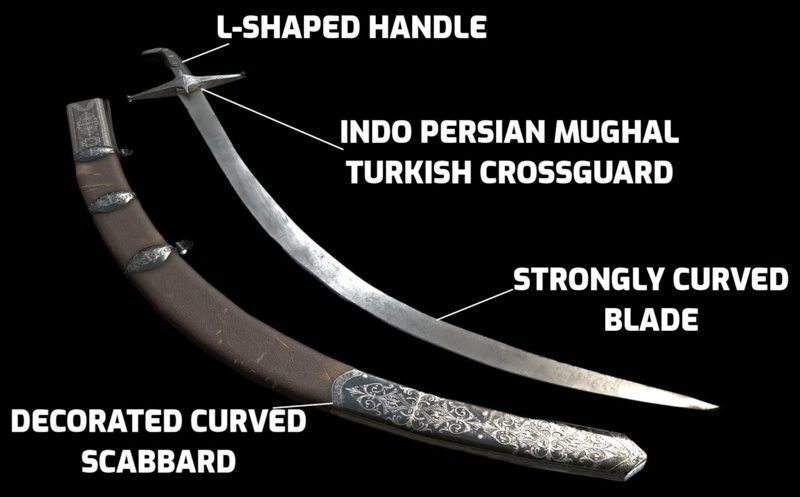
Undoubtedly, the Shamshir’s most exciting and distinctive feature that can easily be spotted from afar is the unique curve that begins in the first third of the blade.
Blade
The most unique and distinct characteristic of the Shashmir blade is its curve. Some believe the curve is related to the concept of the Islamic crescent. The blade is made of cold steel and typically has watery and wavy patterns often found in wootz or Damascus steel.
The blade length of the Shamshir is usually around 31-35 inches (80-90 cm) long and is similar to other middle eastern sabers. As you can see, it looks like the Turkish Kilij, but the most significant difference from the Kiliji is that it has a much stronger curve that starts after the neck of the blade.
It was designed to be very flexible, which is why the blade has a full tang, or continues throughout the entire handle.
Guard
The guard of the Shamshir is made like the typical Indo-Persian-Mughal and Turkish style. It has a diamond shape that goes to the left and right sides of the blade. The quillons aren’t big but can provide a good defense against incoming strikes.
Usually, the guard has all sorts of illustrations as well as writings on them and is heavily decorated. Sometimes the guard can increase the weight of this sword by a lot.
Handle
This grip is curved and has a distinct, enlarged pommel that isn’t just for beauty and looks.
It keeps the blade in your hand while you swing it and brings the back of your hand close to the sword. This makes it possible for the person swinging the blade to use more than just their wrist and pommel to give it power.
Scabbard

The sheath of the Shamshir sword is usually made from a wooden material, but its most distinguishing characteristic is that it’s very heavily ornate and decorated. Usually, the most prominent decorations are at the neck of the sword and the blade’s tip.
It is as long as the Shamshir blade but slightly more curved. This is so that the curved blade can enter the sheath and reach the end.
Length & Size
The overall length of the Shamshir sword is usually around 35 – 41 inches (90 – 105cm) long. This is the perfect size when placed in the hands of the cavalry for making swift strikes that cut deep because of its curve.
Also, this size allows it to be used in foot combat, especially when combined with a shield. The sword was made to be light so that it can be moved swiftly around in various motions, hence the L-shaped grip so it won’t slip away from the user’s hand.
Weight
The Shamshir sword can weigh anywhere from 2.2 to 3.3 lbs (1 to 1.5 kg). This weight can vary due to the many decorations and types of metals that can be attached to the handle and guard.
With this weight, it is an ideal one-handed sword that can even be used with two hands at times. It isn’t too heavy to use, but it’s heavy enough to make deep cuts for a clean kill, especially with downward hacking motions.
Curve
Most of the time, the Shamshir has strongly curved blades that reach their most curved point at about half of the blade’s length. The widest and straightest point is at the sword’s neck near the guard.
From there, it gets thinner and thinner as it gets closer to the edge and tip, with the biggest tapering happening right at the very end. Blades that are in good shape usually have flat faces that are gently convex and roll near the edge and spine. Most of the time, the spine will be slightly rounded too.
Uses for the Shamshir Sword
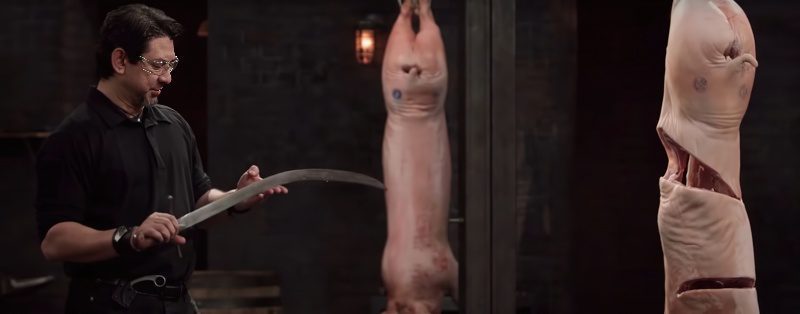
The curvature of the Shamshir creates a blade that is not only aesthetically attractive for some but can also cut quickly and deeply. When the blade penetrates the target at the bottom of the blade’s curve, the slope and elevation of the tip as it travels through the target guarantees that the wound will be as deep as possible. That is why it was mainly used as a cavalry sword.
Even though the blade is curved, a competent user can use it as a sword that may deliver a shocking thrust to an opponent who, at first glance, expects the weapon to be used for slashing attacks online.
Some prefer to use it alongside a straight sword. For example, you could use the Shamshir with your right hand for slashing motion while holding a straight blade in your left hand for stabbing attacks.
Is it Beginner Friendly?
A Shamshir sword feels very light and offers an excellent grip because of its handle. You won’t have any issues with slashing motions, but it might be pretty tricky to use if you plan to do some thrusting.
If you want to start training with a curved sword, the Shamshir is an excellent option, but if you are a beginner and have never used a sword in your life, we recommend opting for a slightly shorter sword first. The intense and strong curve might make it challenging to use for beginners.
History of the Shamshir Sword
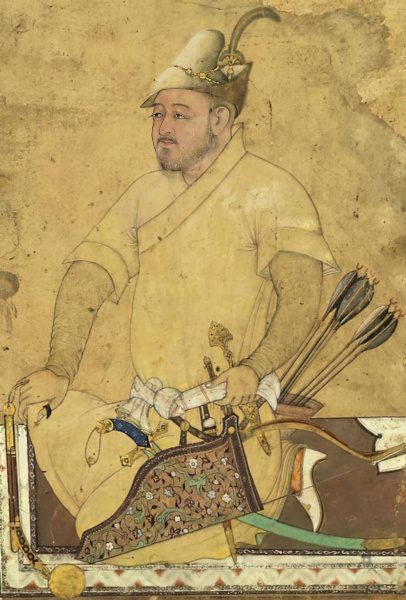
Although its original name is Shamshir, most Europeans refer to this Persian sword as a Scimitar. It was an ideal weapon that succeeded the swords with straight blades in the arms of the Persian horse riders. Due to the highly pronounced curve of the blade, it was given the name Shamshir, which translates to “Tiger Claw.”
Although Persia and modern Iran are known for the Shamshir and the curved swords, they used straight swords before these came into use. It is believed that Persia gradually replaced their straight swords around the 12th century due to outer influence from the surrounding Turkic tribes.
Unlike what some may believe, curved swords didn’t come into use right after the Mongol invasions. The Mongol influence had spread even before their arrival in the 9th century, and there were many curved swords of the type in Persian lands. It was common sense to use curved blades that had proven to be way deadlier in the hands of cavalry units.
The distinct and unique look that the Persian Shamshir took place in the 16th century when the modern Shamshir shape took its form. This was mainly from the blade manufacturing processes in India and the Ottoman Empire, which surrounded Persia at the time. The beautiful “watering” on the blades of some of the earlier Persian shamshirs may be attributed to the use of high-quality crucible wootz steel in the production of the blades.
What is the Difference between Shamshir and Scimitar?
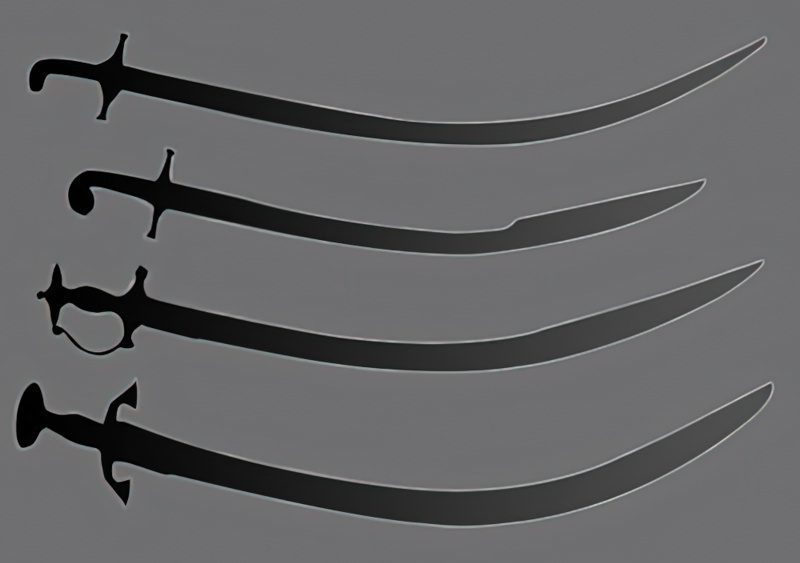
The difference between a Shamshir and a Scimitar is the pronunciation and language usage. In Persian, the word Shamshir means sword. In English, the word Scimitar usually refers to all swords from the Middle East with a curve.
These are the terms used for swords in Middle Eastern countries:
- Shamshir – Iran (Persia)
- Kilij – Turkey and Egypt
- Nimcha – Morocco
- Pulwar – Afghanistan
- Talwar – North India, Pakistan, Bangladesh
In English, all these swords are sometimes referred to under the group name Scimitar, but they all have slight differences. The most significant difference between a Shamshir and the rest of the scimitars would be the narrower curve of its blade.
Shamshir vs. Kilij
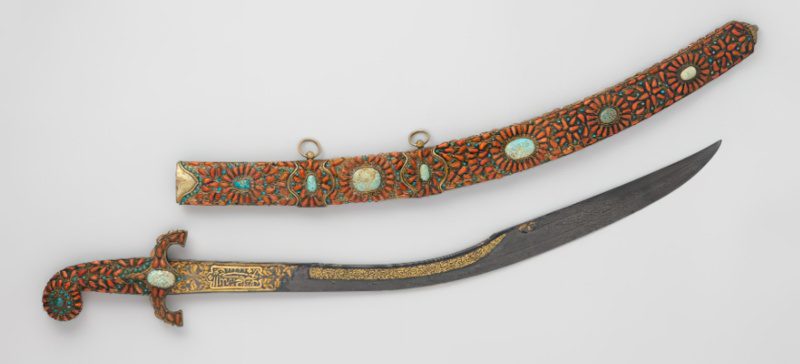
The Shasmir and Kilij were heavily used in the Middle East and Eastern Europe, and both have very similar design characteristics. They both fall into the scimitar family, and their most notable difference is the shape of the blade.
The Turkish sword that was widely used by the Turkic tribes during the Seljuk, Timurid, and Mamluk empires is called Kilij. The Kilij is a sword used mainly at the same time as the Shamshir, but its characteristic is its very broad and curved end of the blade.
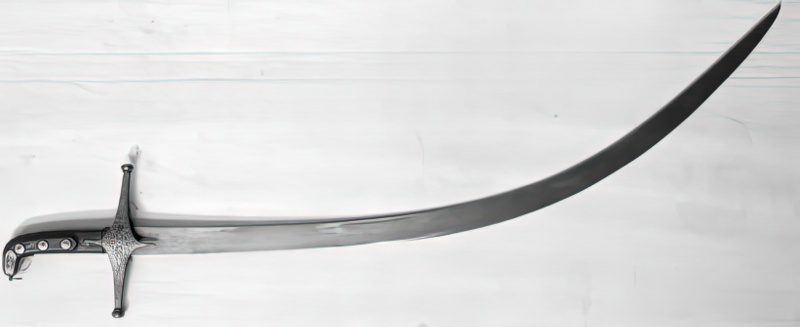
Unlike the Kilij, the Shamshir has a very drastic curve and a blade’s edge that gets thinner and thinner toward the end. That makes the Shamshir a much lighter sword to use, and it can efficiently deliver quick slashing attacks but suffers when used to thrust at enemies.
Conclusion
The Shamshir might be the sword with the most drastic and strongest type of curve out of all the scimitars. Today, it plays a significant role in Middle Eastern culture and tradition. If you are a sword enthusiast and collector, you should place it on your wishlist.
